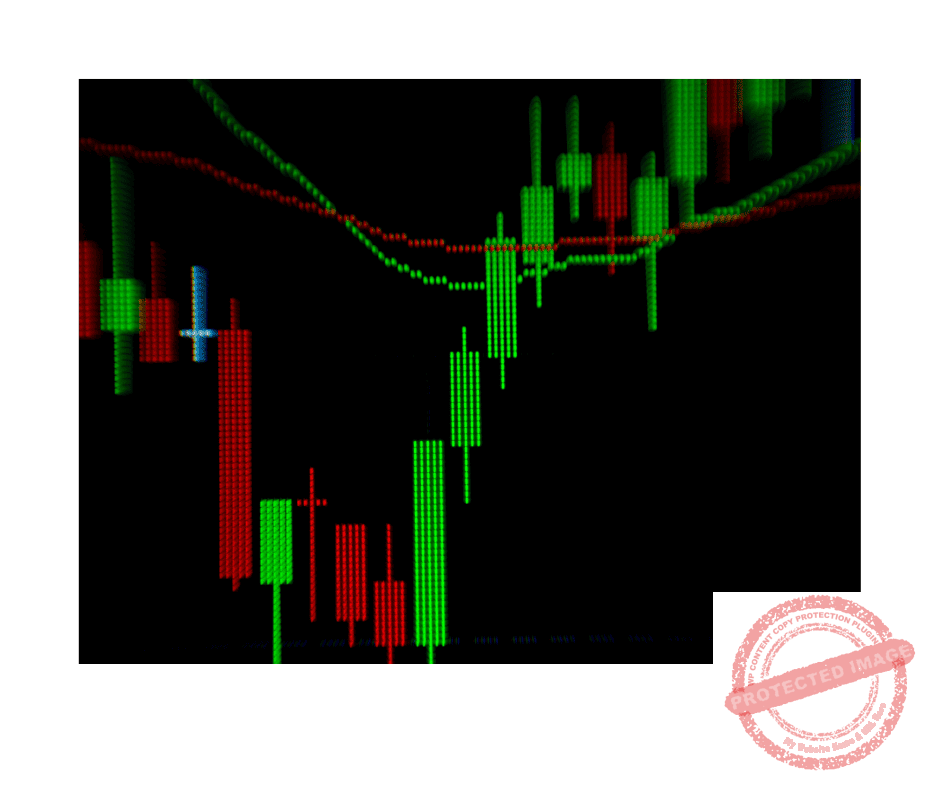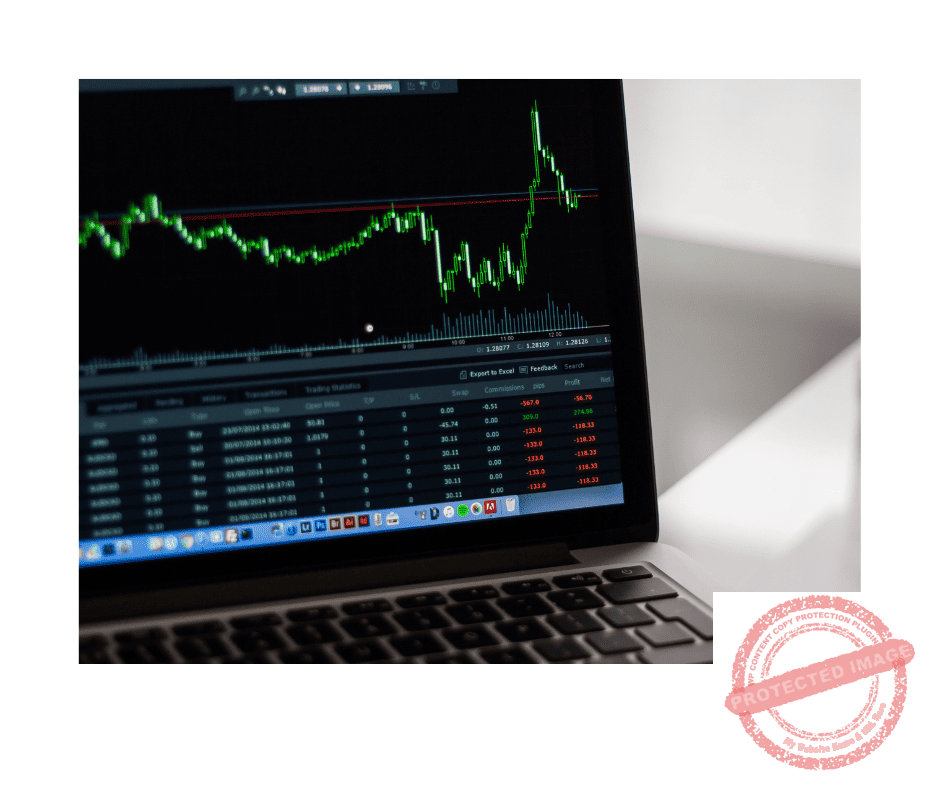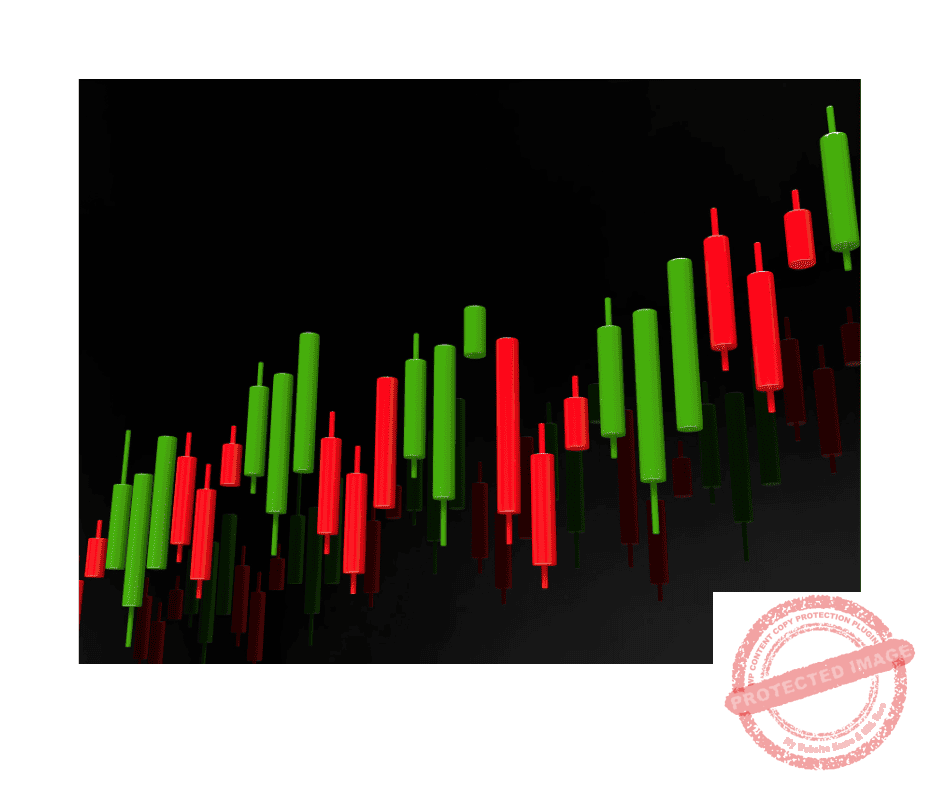Predicting market turns in Forex trading is a challenging yet essential skill for any trader.
This article will guide you through various concepts, strategies, and tools for predicting market turns in Forex.
How to Understand Forex Market Dynamics
Before diving into prediction methods, understanding the Forex market’s fundamental dynamics is crucial.
Economic indicators, political events, central bank policies, and global trends influence the Forex market.
These factors impact the strength and stability of currencies, leading to fluctuations in the market.
Can You Predict Market Turns with Technical Analysis?
Technical analysis studies past market data to forecast future market behavior. Let’s explore its essential aspects.
Understanding Price Charts
Chart Types: Candlestick charts are Forex’s most common chart type. They are popular because they provide more information than a simple line chart, showing the open, high, low, and close prices for a given period.

Time Frames: Traders analyze various time frames according to their trading style. Short-term traders may focus on minute or hourly charts, while long-term traders may look at daily, weekly, or monthly charts.
What Chart Patterns are Useful for Predicting Market Turns
Direction: Rallies or Selloffs are the general direction in which a currency pair moves. Recognizing trends is fundamental in Forex trading. Higher highs and higher lows mark Rallies, while Selloffs feature lower highs and lower lows.
Reversal Patterns: These patterns signal a potential change in direction. Examples include Head and Shoulders (top and bottom), Double Tops and Bottoms, and Inverse Head and Shoulders. Recognizing these patterns can be crucial in predicting market turns.

Continuation Patterns: Flags, Pennants, and Triangles indicate that the current direction will continue after a brief pause.
Are Technical Indicators also Essential?
Moving Averages (MAs): These are Moving Averages (MAs) used to smooth out price action and identify directional changes when MAs and signal lines cross.
Momentum Indicators: Tools like the Relative Strength Index (RSI) and Stochastic Oscillator help identify Overbought or Oversold conditions, often preceding a market turn.
Candlestick Formations
Single Candlestick Patterns: Patterns like Doji, Hammer, and Shooting Star, each providing insights into market sentiment and potential reversals.

Multiple Candlestick Patterns: Bullish and Bearish Engulfing, Harami, and the Morning or Evening Star formations can signal a change in market direction.
While technical analysis is robust, it’s most effective when combined with fundamental analysis.
Predicting market turns cannot be accomplished with a single tool or pattern, but a comprehensive approach increases the likelihood of success.
By profoundly understanding these aspects of technical analysis, you can better equip yourself to anticipate and react to market turns and enhance your trading effectiveness.
How Can You Apply Fundamental Analysis?
Fundamental analysis involves evaluating economic, social, and political factors that affect the value of a currency. It’s about understanding the ‘why’ behind market movements. Here’s a more detailed look:
Economic Indicators
Gross Domestic Product (GDP): This is the broadest measure of a country’s economy and significantly impacts its currency value. A rising GDP often strengthens a currency, while a declining GDP can weaken it.

Interest Rates: Central banks control interest rates and are a significant driver of Forex markets. Higher interest rates offer lenders in an economy a higher return than other countries, attracting foreign capital and increasing the currency’s value.
Inflation Rates: Inflation erodes a currency’s purchasing power. Central banks raise interest rates to combat high inflation, which can lead to currency appreciation.
Employment Data: Strong employment numbers can indicate economic health, leading to currency strength. Key metrics include unemployment rates and non-farm payrolls in the United States.
Political Stability and Economic Performance
Political Stability: Countries with stable governments are likelier to have solid and stable currencies. Political unrest, elections, and changes in government policies can lead to market volatility.
Economic Policies: Government fiscal and monetary policies, such as tax strategies, spending initiatives, and money supply management, can significantly influence currency strength.

International Trade and Capital Flows
Trade Balances: A country with a significant trade surplus (exports exceeding imports) will likely appreciate its currency. Conversely, trade deficits can lead to depreciation.
Capital Flows: Foreign Direct Investment (FDI) and portfolio investment into a country can increase demand for that country’s currency, leading to appreciation.
Geopolitical Events
Global Crises: Events like wars, natural disasters, or global pandemics can cause significant volatility in the Forex markets.
International Relations: Diplomatic relations between countries, especially between major economic powers, can influence currency values.
Central Bank Decisions and Statements
Monetary Policy: Decisions made by central banks on interest rates and quantitative easing directly impact currency values.
Policy Statements: The language and tone used by central bank officials in public statements can provide insight into future policy directions.

Economic Forecasts and Reports
Economic Forecasts: Reports and forecasts from financial institutions and international bodies like the IMF can influence market expectations.
Market Sentiment: How traders perceive and react to economic news can drive market movements, sometimes regardless of the actual data.
Continual Learning and Adaptation
The Forex market is constantly evolving, and so should the trader’s strategies. Continual learning and adaptation are essential.
Learning means staying updated on global economic news, refining trading strategies, and learning from successes and failures.
Conclusion
Predicting market turns in Forex requires a combination of technical, sentiment, and fundamental analysis underpinned by robust risk management.
While there is no foolproof method to predict market turns, a well-informed and adaptable approach can increase the chances of successful trading.
You need to remember that Forex trading involves significant risk, and it’s crucial to trade responsibly.
What’s the Next Step?
Select your favorite chart and try predicting market turns using the abovementioned ideas.
In addition, look for opportunities to familiarize yourself with trading techniques and fundamental analysis.
If you need help developing an analysis process, you can use our Six Basics of Chart Analysis. If you’re unfamiliar with the Six Basics, you can learn them here for free.
The “Six Basics” will give you a strong foundation in chart analysis, which you can incorporate with what you’ve learned about predicting market turns.
In addition, when you get the “Six Basics,” you’ll also get Forex Forecast delivered to your inbox every Sunday.
Forex Forecast includes:
- Trade Ideas and Analysis
- I will use the Six Basics of Chart Analysis and Advanced Strategies to show you the trade opportunities I’m watching.
- Case Studies from Around the Web
- Watch how applying the Six Basics worked on some of the best, most profitable trades.
- Trading Education Guides and Videos
- Want to learn most Six Basics techniques and advanced strategies?
- I produce videos and guides to help you learn and improve trading practices.
- Links to New Articles
- I publish new articles on topics traders will want to know about every week, and you can find out when they post.
- Positionforex.com News
- Did something change at positionforex.com? Learn about it here first!
- Links to upcoming webinars
- Attend free webinars to improve your trading.
- And Much More
- Tools, Membership-only Videos, and more will be released in the Forex Forecast.
The best part – it’s completely free.

Frequently Asked Questions
What Does Predicting Market Turns in Forex Mean?
Market turns in Forex refer to points where the currency market shifts direction, moving from an uptrend to a downtrend or vice versa. These turns are crucial for traders as they can profitably signal opportunities to enter or exit trades.
How Important is Technical Analysis in Market Turns?
Technical analysis is vital in predicting market turns. It involves analyzing historical price charts and patterns to forecast future market movements. Traders often use Support and Resistance levels, Moving Averages, and indicators in technical analysis.
What About Predicting Market Turns Using Only Fundamental Analysis?
While fundamental analysis, which focuses on economic, social, and political factors that influence currency values, is insightful, relying solely on it won’t be sufficient. Combining it with technical analysis provides a more comprehensive approach.
What Role Do News and Current Events Play?
News and current events can significantly impact Forex markets. Political events, economic reports, and global incidents can sway investor sentiment and cause rapid market turns. Traders need to stay informed and interpret news quickly.
Are There Any Tools Specifically Designed to Predict Market Turns?
Several technical indicators, such as Japanese Candlesticks, RSI, TSI, Chart Patterns, and Support and Resistance, are designed to predict market behavior. However, no tool guarantees absolute accuracy, so they should be part of a broader trading strategy.
Can Reversals be Predicted with Complete Accuracy?
Predicting market turns with complete accuracy is not possible due to the inherent unpredictability and complexity of the Forex market. Traders should develop strategies that maximize gains and minimize losses rather than seeking perfect predictions.

